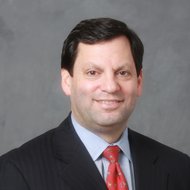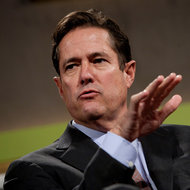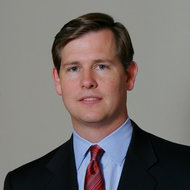 Mike Segar/ReutersFabrice Tourre, a former Goldman Sachs trader, is accused of misleading clients.
Mike Segar/ReutersFabrice Tourre, a former Goldman Sachs trader, is accused of misleading clients.
Three years ago, in the shadow of the financial crisis, some of the biggest banks on Wall Street slipped into the government’s cross hairs.
Now, after striking nine-figure settlements with firms like Goldman Sachs and JPMorgan Chase, the government’s campaign to punish Wall Street over risky investments sold before the crisis will culminate in an unlikely way — with the civil trial of a 34-year-old Frenchman, Fabrice P. Tourre.
In a federal courtroom in Lower Manhattan next week, the former midlevel Goldman employee will fight the Securities and Exchange Commission’s claim that he was part of a conspiracy to mislead investors when selling a mortgage security that ultimately failed. Mr. Tourre, a trader stationed in the bowels of Goldman’s mortgage machine when the S.E.C. thrust him into the spotlight, is one of only a handful of employees at big Wall Street firms to land in court over the crisis.
The rarity of the trial underpins its importance. For Mr. Tourre, who is now enrolled in a doctoral economics program at the University of Chicago, an unfavorable verdict could yield a fine, or worse, a ban from the securities industry. A victory in court, however, would offer only belated consolation to Goldman, which is paying for his defense. For the S.E.C., an agency still dogged by its failure to thwart the crisis, the trial is a defining moment that follows one courtroom disappointment after another.
When a jury cleared a midlevel Citigroup employee in a mortgage-bond trial, the S.E.C. took measures to buoy its case against Mr. Tourre. For one, it talked to a private jury consultant, people briefed on the matter said, though it is unclear whether the agency hired the firm. The head of the agency’s trial team is also leading the Goldman case himself, a surprising move.
“Their reputation for trying cases hangs in the balance,” said Thomas A. Sporkin, who was a senior S.E.C. enforcement official until last year when he departed for the law firm Buckley Sandler. “This is their opportunity to show Wall Street that they can prevail against an individual at trial.”
Both sides were in court Tuesday sparring over what the jury should — and shouldn’t hear. The judge, Katherine B. Forrest, ruled that the defense can question a crucial S.E.C. witness, a woman who was an executive of a company that helped arrange the mortgage security, about the agency’s eve-of-trial decision to drop an unrelated investigation against her, a reprieve Mr. Tourre’s lawyers have argued might color her testimony.
The S.E.C. also walked away with a major victory: Judge Forrest permitted the agency to argue that Mr. Tourre was part of larger conspiracy at Goldman, a move that will allow evidence beyond Mr. Tourre’s actions.
Related Links
Yet even if it secures a victory at trial, the S.E.C. will probably face scrutiny all the same, as critics question why the agency chose to make Mr. Tourre the face of the financial crisis. Rather than take aim at a high-flying executive, the agency filed its most prominent crisis-era case against someone barely known on Wall Street, a concern that also hampered the Citigroup case, when the foreman of the jury asked, “Why didn’t they go after the higher-ups rather than a fall guy?”
An S.E.C. spokeswoman declined to comment. But in the past, the agency has defended its actions tied to the crisis, noting that it has sued 66 C.E.O.’s and other senior officers in such cases, including a few executives from Wall Street and major mortgage lenders.
When the S.E.C. filed its case against Goldman and Mr. Tourre in April 2010, the allegations shook the bank. Within months, it agreed to pay a $550 million fine, without admitting or denying guilt, then the largest penalty ever levied on Wall Street.
Mr. Tourre, however, rejected a deal on the eve of Goldman’s settlement, people briefed on the matter said. The deal, the people said, would have required Mr. Tourre to face a lifetime ban from the securities industry and a cash penalty — virtually the same punishment he would face if found liable at trial. The agency has not offered to settle since.
At the heart of the agency’s case is the contention that in 2007 Mr. Tourre and Goldman sold investors a mortgage security, known as Abacus, without disclosing a crucial fact: a hedge fund run by the billionaire John A. Paulson helped construct Abacus and then bet against it. The S.E.C. cited Goldman for “misstating and omitting key facts” about Mr. Paulson’s involvement. When the mortgage market soured, a German bank and a handful of other sophisticated investors lost more than $1 billion on the deal.
“The S.E.C. essentially argues that Tourre handed Little Red Riding Hood an invitation to grandmother’s house while concealing the fact that it was written by the Big Bad Wolf,” Judge Forrest explained in a recent ruling.
To win its case, the S.E.C. must show by a preponderance of the evidence that Mr. Tourre “committed a fraudulent act that was material.” The verdict is likely to hinge on whether the S.E.C. can prove what it called two basic acts of “deception” stemming from January 2007, when Mr. Paulson’s hedge fund asked Goldman to create an investment worth betting against.
What led to the first misstep, according to the S.E.C., was Goldman’s decision to use ACA Management to pick the underlying mortgage bonds for the investment. ACA worked closely with Mr. Paulson’s hedge fund in the selection process, the S.E.C. said.
But in a marketing document that Goldman submitted to investors, the bank said the portfolio was “selected by ACA,” with no mention of Mr. Paulson.
Mr. Tourre’s lawyers, however, are expected to note that it was unheard-of for any Wall Street bank to disclose the name of the hedge fund betting against an investment. And e-mails reviewed by The New York Times suggest that the main investor in Abacus, the German bank IKB Deutsche Industriebank, knew the contents of the deal and possibly even removed certain bonds from its makeup. In the two March 2007 e-mails, Goldman employees sent three “replacement” bonds to an IKB executive, saying “hopefully these will work.”
In turn, the S.E.C. is expected to outline a second possible misstep by Mr. Tourre tied to his dealing with ACA. Mr. Tourre, the S.E.C. said, misled ACA into thinking that Mr. Paulson was investing in the bonds rather than betting against it. In a January 2007 e-mail, Mr. Tourre falsely told ACA that one chunk of Abacus was “pre-committed,” meaning that an unnamed investor already agreed to buy it. In a deposition, he later acknowledged that his e-mail “could have been more accurate.”
ACA, the S.E.C. said, interpreted Mr. Toure’s e-mail to mean that Mr. Paulson was the unnamed investor. And when that impression was conveyed to Mr. Tourre in an e-mail, according to the S.E.C., he failed to immediately correct it.
ACA’s chief executive later told the S.E.C. that he “would not have voted to approve” his company’s involvement in Abacus had he known of Mr. Paulson’s strategy.
Yet Mr. Tourre’s lawyers will argue that if ACA did not know of Mr. Paulson’s bet against Abacus, it should have. ACA, the lawyers note, was a sophisticated player and met separately with Mr. Paulson’s team to discuss the Abacus deal. Goldman, the lawyers argue, also sent ACA “a steady stream” of documents correcting Mr. Tourre’s misstatement.
“Fabrice Tourre has done nothing wrong. He is confident that when all the evidence is considered, the jury will soundly reject the S.E.C.’s charge,” his lawyers, Pamela Chepiga and Sean Coffey, said in a statement.
The defense received additional ammunition on Tuesday when Judge Forrest ruled that the S.E.C. could not fully block mention of newspaper articles from 2007 that discussed Mr. Paulson’s penchant for betting against the mortgage market.
The judge has yet to rule on whether to allow the S.E.C. to introduce some of the case’s most colorful e-mails, notably one where Mr. Tourre says a friend had nicknamed him “Fabulous Fab,” and jokes that he sold toxic real estate bonds to widows and orphans.
Article source: http://dealbook.nytimes.com/2013/07/09/s-e-c-seeks-validation-in-goldman-sachs-trader-case/?partner=rss&emc=rss




